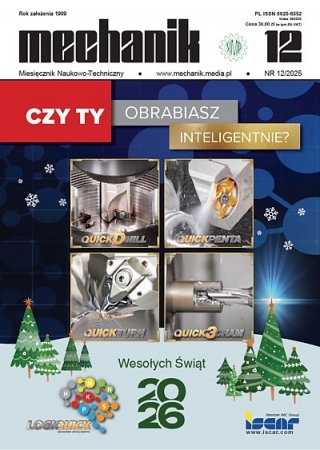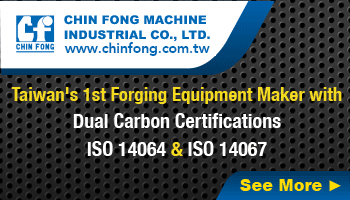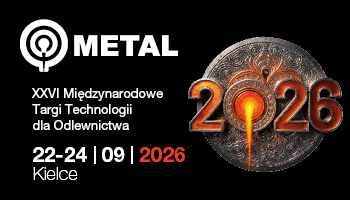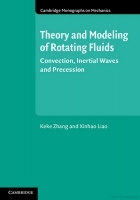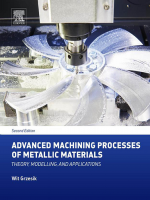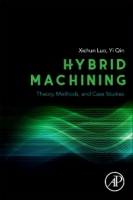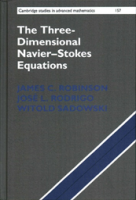Formowanie pojemników na materiały PCM metodą hydrotechniczną z elastomerem *
Forming containers for PCM materials using a hydrotechnical method with an elastomer
Author: Paweł Bałon, Bartłomiej Kiełbasa, Edward Rejman, Robert Smusz, Janusz Szostak
Mechanik nr 02/2019 - Obróbka plastyczna
STRESZCZENIE: Autorzy przedstawili metodę formowania za pomocą ciśnienia oleju, wywierającego nacisk na elastyczny stempel formujący kształt pojemnika na materiał zmiennofazowy (PCM). Dzięki zastosowaniu dwóch płyt elastomerowych o twardości 65 i 80 w skali Shore’a otrzymana część ma na środku odwzorowane usztywnienia oraz odpowiednią głębokość misy. Ta metoda nie jest szeroko rozpowszechniona ze względu na konieczność zapewnienia precyzyjnej konstrukcji i tym samym szczelności układu obciążającego formowany wsad. Ze względu na obniżone koszty narzędzia stosuje się ją zwłaszcza w przypadku jednostkowej produkcji części prototypowych lub produkcji małych serii. Autorzy przeprowadzili testy właściwości mechanicznych materiału, numeryczną analizę (MES) wykonalności oraz badania rzeczywiste (warsztatowe) metodą prób i błędów – przez zmiany konstrukcyjne narzędzia. To pozwoliło na osiągnięcie optymalnych parametrów ciągnienia materiału dla zadanych warunków brzegowych. Dzięki badaniom wyeliminowano znaczące naprężenia i pocienienia w gotowych częściach oraz w narożach pojemników na PCM.
SŁOWA KLUCZOWE: tłoczenie, formowanie, elastyczny stempel, formowanie gumą
ABSTRACT: In this work, the authors present the method of forming by oil exerting pressure on the elastic punch forming the shape of a container for phase change material (PCM). Thanks to the use of two elastomer plates with a hardness of 65 and 80 Shore, the obtained part has mapped stiffeners in the middle and the appropriate depth of the bowl. This method is not widespread due to the precise design ensuring tightness of the load system of the formed blank. By reducing the tool costs, this method is used in particular in the case of unit production of prototype parts or small production series. The authors carried out tests of mechanical properties of the material, numerical analysis of feasibility with the FEM, real (workshop) trials after previous optimization by trial and error through structural changes of the tool. This allowed to obtain the best material drawing parameters for given boundary conditions. The research allowed to eliminate significant stresses and thinning in finished parts and corners of PCM containers.
KEYWORDS: stamping, forming, elastic punch, rubber forming
BIBLIOGRAFIA / BIBLIOGRAPHY:
- Wagoner R.H., Chenot J.L. “Metal Forming Analysis”. 2011, s. 177–198.
- Bałon P., Świątoniowski A., Szostak J. “Improved method of springback compensation in metal forming analysis”. Strength of Materials. 48, 4 (2016): s. 540–550.
- Troive L., Bałon P., Świątoniowski A., Mueller T., Kiełbasa B. “Springback compensation for a vehicle’s steel body panel”. International Journal of Computer Integrated Manufacturing. 31, 2 (2018): s. 152–163.
- Bałon P., Świątoniowski A., Kiełbasa B. “The analysis of bottom forming process for hybrid heating device”. ESAFORM 2017: Proceedings of the 20 th. International ESAFORM Conference on Material Forming. T. 1896 (2017).
- Wie H., Chen W., Gao L. “Sprinback Investigation on Sheet Metal Incremental Formed Parts”. 2011.
- Seki N. “Successfully controls springback in thin Ultra-High Strength Steel stamping parts using PAM-STAMP 2G”. TOA Industries (2011).
- Wagoner R.H., Wang J.F., Li M. “Volume 14B: Metalworking: Sheet Forming”. ASM Handbook. The Ohio State University, 2006.
- Li H., Li G.S.G., Gong Z., Liu D., Li Q. “On twist springback in advanced high-strength steels”. Materials and Design. 32 (2011).
- ESI Group PAM-STAMP 2G 2011. “User’s Guide”. France, 2011.
- Abdullah A.B., Sapuan S.M., Samad Z., Aziz N.A. “A comprehensive review of experimental approaches used in the measurement of springback”. Advances in Natural and Applied Sciences. 6, 2 (2012): s. 195–205.
DOI: https://doi.org/10.17814/mechanik.2019.2.20
* Artykuł recenzowany



